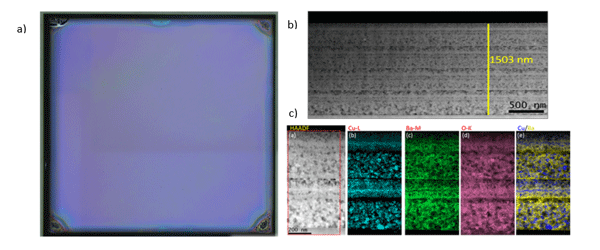WB3-2
Novel Class of Fluorine-free Solutions for Transient Liquid Assisted Growth of YBa2Cu3O7 Superconducting Films
Dec.1 16:15-16:30 (Tokyo Time)
Institut de Ciència de Materials de Barcelona, ICMAB-CSIC, Campus de la UAB, 08193 Bellaterra, Catalonia, Spain1
GRMT, Department of Physics, University of Girona, E17071-Girona, Catalonia, Spain2
Diffabs beamline, Soleil Synchrotron, Paris, France3
Research involved in developing alternative energy sources and more efficient energy transport has become a necessity to face global warming. Undoubtedly, the discovery of high temperature superconductors (HTS) proved to be an appealing solution to enhance importantly clean electrical energy, but is nowadays still at its dawning given the high production costs of the currently available technology. By implementing chemical solution deposition (CSD) techniques, the feasibility of low cost nanostructured epitaxial cuprate superconductors has been demonstrated. Hence, we present a versatile and tunable CSD method suitable for the growth of epitaxial YBa2Cu3O7 superconducting films. Disregarding the renowned trifluoroacetate route, we center our focus on Fluorine-free solutions, thus meeting the global requirement for greener chemical processes, but nonetheless achieving ultrafast growth rates beyond 100 nm/s using transient liquids during the epitaxial growth of the superconducting layer in the innovative framework of TLAG (transient liquid assisted growth), a high-throughput scalable non-equilibrium process [1]. Solutions of different molar ratio are prepared through a facile and fast method from self-synthesized Y, Ba, and Cu propionates precursors and amine-based additives, achieving endured stability, homogeneity and tunability of the final film thickness. Employing in-situ XRD synchrotron radiation, the distinct compositions provide us with a wide overview of the non-equilibrium TLAG process and the YBa2Cu3O7 kinetic phase diagram, yielding a strong correlation between high performance properties and solution chemistry. The different routes to approach the ultrafast TLAG growth and the parameters combination to reach high epitaxy and critical currents were investigated by TEM analysis and SQUID magnetometry.
[1] Soler, L., Jareño, J., Banchewski, J. et al. Ultrafast transient liquid assisted growth of high current density superconducting films, Nat Commun 11, 344 (2020). https://doi.org/10.1038/s41467-019-13791-1
Fig. a) Optical microscope image of a pyrolyzed film. b) HR-TEM showing the homogeneity and thickness of a four layers pyrolyzed film. c) STEM-HAADF to demonstrate the homogeneous distribution of phases in pyrolyzed layers.
Keywords: chemical solution deposition, transient liquid assisted growth, superconducting layers, YBCO
